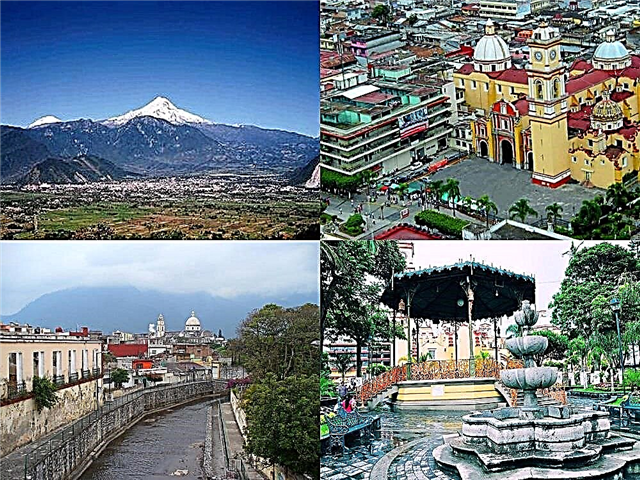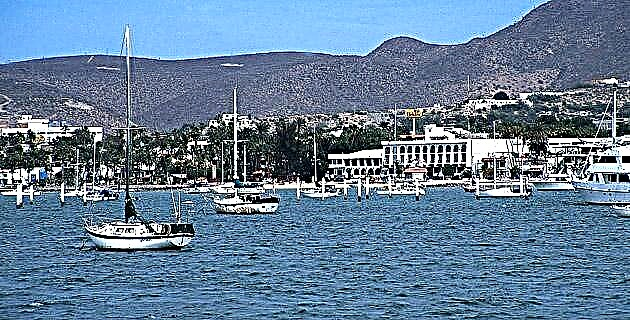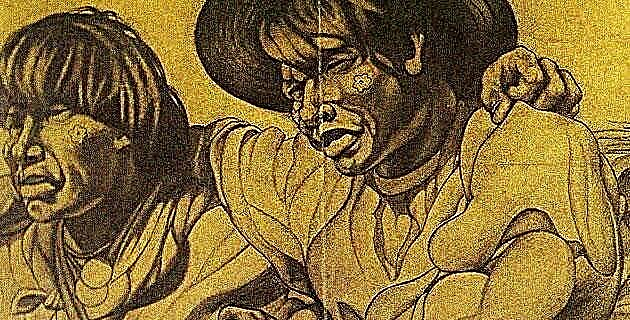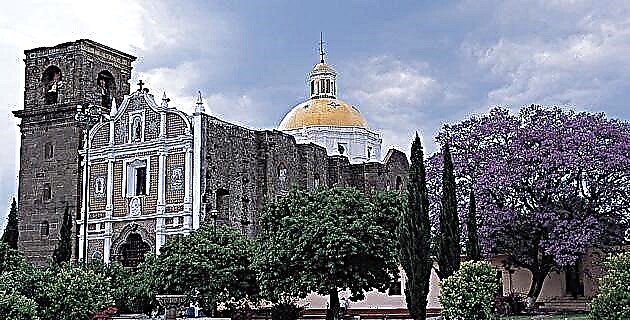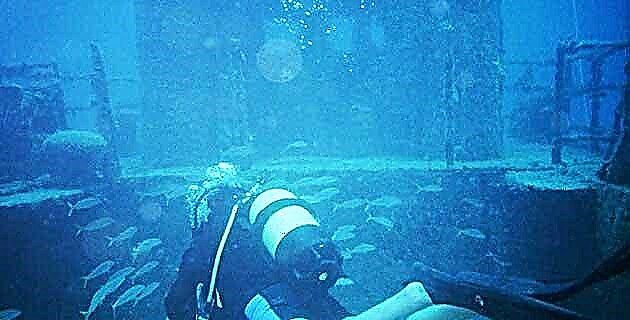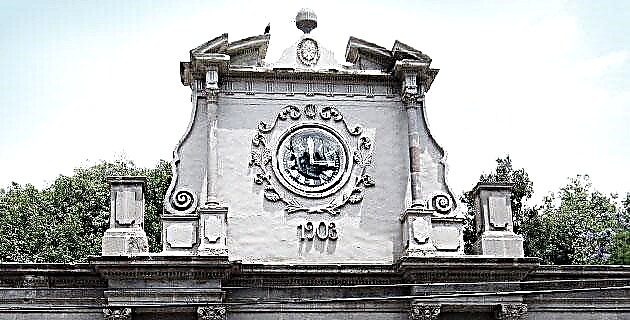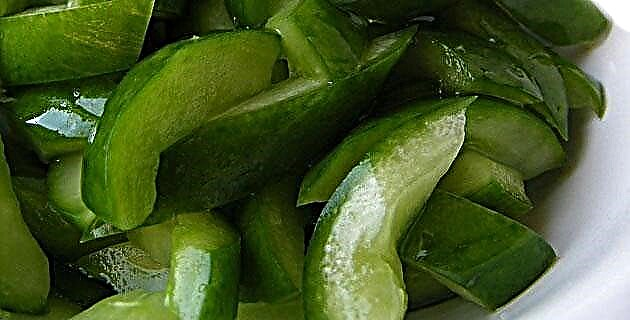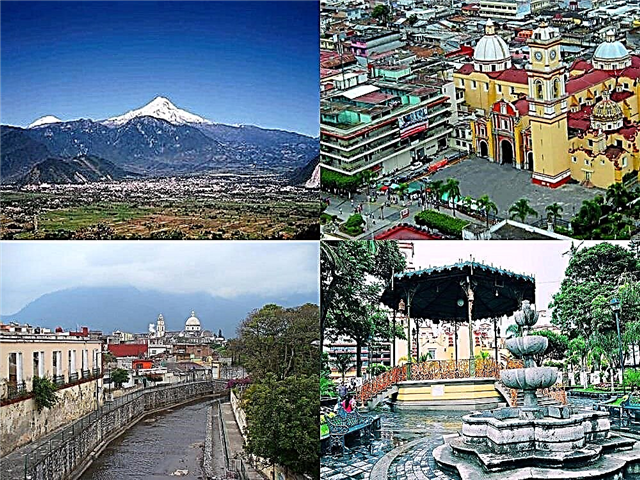The so-called "City of Happy Waters" is a viceregal coffin brimming with architectural jewels and marvelous landscapes. Get to know the Magic Town Veracruzano from Orizaba with this complete guide.
1. Where is Orizaba located?
Orizaba is the head city of the Veracruz municipality of the same name, nestled in the mountains of the central area of Veracruz. It was an important viceregal city, reputed as the most cultured in the country and in its brilliant history it accumulated an architectural heritage worthy of admiration. The strategic location of Orizaba made it during colonial times a relevant station on the road between the Veracruz coast and Mexico City, which is 266 km away. Orizaba is conurbation with the headwaters of Río Blanco and Nogales, Veracruz municipalities with which it borders. The state capital, Xalapa, is located 179 km away, while the Port of Veracruz is 132 km away.
2. What are the main historical features of the city?
The first known settlers were Totonacs and later the territory was dominated by Toltecs, Tlaxcalans and Mexica. Hernán Cortés liked the climate of Orizaba and rested for two days when he passed through the place for the first time in 1520. In 1540 the planting of sugar cane began to take advantage of the abundance of water and in 1569 the first temple was built, dedicated to the Lord of Calvary. Between 1797 and 1798, due to the fear of an English attack on the Port of Veracruz, Orizaba was the capital of the viceroyalty of New Spain; between 1874 and 1878 it was the state capital. During the Independence, the city was realistic and pro-French in the time of Maximilian, being the object of reprisals by the republicans.
3. How is the climate of Orizaba?
Orizaba has a pleasant mountain climate, with an average annual temperature of 21.5 ° C; which rises to 22 ° C between May and June, and falls to 16 or 17 ° C in the winter season. Summers are rainy in the "Pluviosilla" and between June and September most of the 2,011 mm of water that falls annually in the city precipitates. In May and October it rains a little less and between November and April the rains are scarce. Orizaba is not a place of extreme temperatures; moments of maximum heat rarely exceed 28 ° C, while extreme cold is 10 or 11 ° C.
4. What are the main attractions of Orizaba?
Guarded by the Pico de Orizaba, the highest mountain in Mexico, and served by a modern cable car, the city of Orizaba is full of architectural and cultural attractions. A minimum list of places to visit has to include the Cathedral of San Miguel Arcángel, the Palacio de Hierro, the Museum of Art of the State of Veracruz, the Sanctuary of La Concordia, the Great Ignacio de la Llave Theater, the Ex Convent of San José de Gracia and the Municipal Palace. Likewise, the Calvario Church, the Municipal Historical Archive, the Town Hall, the Carmen Church, the Río Blanco Factory, the House of Culture, the Mier y Pesado Castle, the Church and Hospital of San Juan de God, and the Pantheon of the city. To its architectural wealth, Orizaba unites a no less attractive natural heritage in places such as the Cerro del Borrego, the Cerro de Escamela, the Paseo del Río Orizaba, the Cañón del Río Blanco National Park and the Cañón de la Carbonera. If you add the delicious local cuisine and a calendar full of festivals, the Magic Town of Veracruz has it all for an unforgettable stay.
5. What can I do at Pico de Orizaba?
The Citlaltépetl (Monte de la Estrella, in Nahua) or Pico de Orizaba, is the highest elevation in Mexico, at 5,610 meters above sea level, and is also the luxury sentinel of the city that bears its name. Mountaineers are challenged by the perpetual snows of the dormant volcano and microclimates that offer plant beauty, fauna and recreational activities for all tastes are linked up on the ascent. Above 3,200 meters above sea level, the temperature approaches 2 ° C and beyond 4,300 meters of altitude it is already below zero. On the lower slopes, where the climate is cool, you can camp, hike, observe nature, go mountain biking and, if the weather permits, be enraptured by the overwhelming vastness.
6. What is the Cathedral of San Miguel Arcángel like?
The main temple of the city is a building with three naves, a central one and two narrower lateral ones, and a tower, built in the late seventeenth century by the Franciscans. Its façade is sober and attractive, especially for its Corinthian order columns in the lower body and Doric order in the upper body where the choir window is located. The current tower has two bodies and was installed in the 19th century to replace the original one, damaged by earthworks. The interior stands out for the crystal chandeliers, the neoclassical altarpieces and some paintings attributed to the master Miguel Cabrera. There is also a small museum of religious photos and ornaments.
7. What is the interest of the Palacio de Hierro?
The most beautiful building in Orizaba is the supreme representation of Art Nouveau in Mexico and is also the only metallic palace in the world in the style that renewed architectural art in the late 19th century. It was designed by the famous French engineer Gustave Eiffel during the Porfiriato, when Orizaba had the reputation of being the most cultured and art-loving city in the country. Its metal structure, bricks, wood, wrought iron details and other components were brought from Belgium in 3 ships and it was erected as the seat of municipal power. It currently houses a museum on beer and another on the history of the Orizaba Valley. Its cafeteria is the most glamorous in the city.
8. What can I see in the Veracruz State Art Museum?
Since its construction in 1776 as the Oratory of San Felipe Neri, this splendid two-level building with beautiful ornamentation has been hit by earthquakes, which is why it has almost always been found cracked. After the triumph of the Reformation in the 19th century, the Philippian monks had to abandon the building and during the French intervention it was a hospital for the soldiers of the empire. Later it was a hospital and a women's prison until the earthquake of August 1973 left it battered and it was abandoned for 20 years. After rebuilding, it became a Museum of Art and its collection of more than 600 works, including 33 by Diego Rivera, is considered the most complete in the Gulf of Mexico area.
9. What is the Sanctuary of Concordia like?
The Sanctuary of Santa María de Guadalupe «La Concordia» is a temple with a beautiful facade and two twin towers, located in the historic center of Orizaba, in the old neighborhood of Omiquila. It was erected by the Order of San Felipe Neri in 1725, after several churches built during the 17th century by the indigenous people of Omiquila collapsed due to the swampy terrain. The facade of the current church is distinguished by the magnificent mortar relief of the Virgin of Guadalupe, with ornamentation in the Churrigueresque style with popular influence. Inside, there are two altarpieces with a religious theme.
10. What is the attraction of the Gran Teatro Ignacio de la Llave?
This elegant Italian neoclassical theater was inaugurated in 1875 with a performance by the opera singer Maria Jurieff and its metal roof was the first in the country on a large building. It is the headquarters of the city's Classical Orchestra and a frequent setting for theater, dance, concerts and recitals. Like many buildings of historical value in Orizaba, it has led a hard life due to earthquakes. The 1973 earthquake left it in ruins, undergoing a complex restoration that lasted 12 years. It is named after its promoter, the prominent leader Ignacio de la Llave, a native of Orizaba, who also gives his name to the state of Veracruz.
11. Why is the Ex Convent of San José de Gracia distinguished?
This majestic convent complex was built by the Franciscans of the Third Order in the 16th century, undergoing various renovations that gave it a neoclassical appearance. After the Reformation, the convent closed its doors in 1860 and began a long period of semi abandonment and various uses for the construction and its properties, which was successively the headquarters of the French imperialist troops, a neighborhood patio, a Masonic lodge and a school for workers. during the Revolution. The 1973 earthquake destroyed the roofs. Some renovations were recently carried out that have allowed the property to be opened to the public.
12. What stands out in the Municipal Palace?
It is a magnificent building in French architectural style that was built in the early 20th century during the Porfiriato era. It was built to house the Orizaba Preparatory College, an institution that enjoyed great prestige in the fields of science and the arts. The main artistic jewel of its enclosure is the mural National Reconstruction, painted by the master José Clemente Orozco in 1926. The building has two levels and a tower, with a central patio and profusion of semicircular arches with short balustrades and beautiful landscaped areas surrounding the esplanade.
13. What stands out in the Church of Calvary?
The original temple of Calvary was the first one built in Orizaba, a straw chapel built by the Franciscans in 1569 for the worship of the natives. The current solid temple of neoclassical lines and large columns was erected in the 19th century and stands out for its dome, the highest in the city. The venerated image of Jesus on the Cross, known as the Lord of Calvary, was a donation made in 1642 by the famous bishop beatified in 2011, Juan de Palafox y Mendoza. Inside, some pieces stand out for their beauty, such as the chandeliers, two carved wooden sculptures and a restored gate.
14. What is of interest in the Municipal Historical Archive of Orizaba?
The building that houses the Historical Archive of the city is one of the most beautiful in Orizaba, with its tile roof, its spacious and cozy patio and interior garden, with a fountain and clock, and surrounded by galleries with semicircular arcades supported by elegant columns. The building is home to the Museum of the City, free to access, which has 5 rooms. The sample includes a vestige of the Archaeological Tombstone of Tepaxtlaxco-Orizaba, maps, old documents and books, historical objects and a gallery of the most illustrious Orizabeños characters. There is also a Novo-Hispana Library.
15. What is the Town Hall?
This viceregal construction erected in 1765 was Orizaba's second town hall, housing municipal power until 1894. It was also the seat of the state government palace during the period 1874 - 1878, in which the Ciudad de las Aguas Alegres was the capital of Veracruz. The beautiful building, also called the House of Councils, is distinguished by its facades of scalloped arches on the ground floor and semicircular arches on the second level, supported by columns of the same design. In this place the town received the title of "Loyal Villa de Orizaba" by mandate of the Spanish monarch Carlos III.
16. What is the Iglesia del Carmen like?
The Church of Nuestra Señora del Carmen was built in 1735 by the Discalced Carmelites and is a temple with a Churrigueresque facade that was originally a convent temple of the order born in Spain in the 16th century through the intermediary of Santa Teresa de Jesús and San Juan de la Cruz. . The church of strong construction in lime and stone and a mosaic floor was the only building that was saved from the demolition of the Carmelite convent in the 1870s. Due to its strategic location and its sturdiness, it was a fortress and scene of bloody events during the warrior history of Mexico.
17. What is the importance of the Río Blanco Factory?
In the municipality of Río Blanco, conurbation with Orizaba, lovers of architecture linked to the historical events of modern Mexico can appreciate the building of the legendary Río Blanco Factory, where one of the most significant episodes of Mexican social struggles took place. In January 1907 there was a strike in the textile factory demanding better working conditions. The strike turned into a riot and Porfirío Díaz's army opened fire on the crowd of about 2,000 workers gathered in front of the building. The death toll was estimated at between 400 and 800 workers and the event would become one of the main triggers of the Mexican Revolution.
18. What does the Orizaba House of Culture offer?
It is an attractive building located in Sur 8 N ° 77, between Colón and Poniente 3, in the historic center of Orizaba. The two-story house was built in the 1940s and before becoming a cultural house it was the headquarters of the Orizaba Brewing Industry Union of Workers and Craftsmen. In the construction of almost a thousand square meters are the Rosario Castellanos Theater, the Rufino Tamayo Gallery, the Ramón Noble Coral Hall and the Rafael Delgado Library, as well as exhibition halls and rooms for music, ballet, painting and other artistic specialties. The institution offers workshops of various types of dance, music, song, painting and theater.
19. What is Castillo Mier y Pesado like?
The Castle of Orizaba, better known in the city as the Castillo Mier y Pesado, is a spacious and elegant building built on an immense green area, standing out for the water mirror located in front of the main facade, the gardens, the ornamental figures and the splendid rooms. The Pesado family was one of the most ancestral and prestigious in Orizaba in the 19th century, headed by Don José Joaquín Pesado Pérez, a member of the jury that approved the lyrics of the national anthem, and Doña Isabel Pesado de la Llave, Duquesa de Mier. After the death of her son a few days after he was born and that of her husband, Doña Isabel ordered the creation of the Mier y Pesado foundation, which operates in the castle, taking care of children and the elderly.
20. What stands out in the Church and Hospital of San Juan de Dios?
It was built in the 1640s by the Juanino order in the Spanish neighborhood that was located in this part of the city, being one of the oldest temples in Orizaba. It was built on the royal road that led from the port of Veracruz to Mexico City during the viceregal era and the hospital was used mainly as a place of relief from the ills of hot weather. At the end of the seventeenth century the complex was destroyed by an earthquake and the new construction was erected in the 1760s. It is believed that it houses the remains of Catalina de Erauso, the «Nun Alférez», a famous Spanish adventurer who died near Orizaba around 1650.
21. What is the interest of the Panteón de Orizaba?
The Orizaba cemetery is a tourist place for two reasons: the architectural and sculptural beauty of the tombs and the so-called Piedra del Gigante. The 60-ton monolith is preserved in the pantheon, although it predates it and the Hispanic city. It was an enormous rock ejected by the Orizaba volcano and its historical importance lies in the fact that it was engraved with a human sacrifice made to the god Xipe Tótec on the occasion of the coronation of the Aztec tlatoani Moctezuma Xocoyotzin. In the cemetery there are 35 graves of artistic interest, distinguishing The Angel Girl, a beautiful marble sculpture on the grave surrounded by legends of a little girl who died tragically at the age of 2.
22. Where is the Cerro del Borrego located?
It is an elevation of 1,240 meters above sea level, the greatest extension of which is within the city of Orizaba, which shares the hill with the Veracruz municipalities of Río Blanco and Ixhuatlancillo. It has 431 hectares and is frequented for leisure activities in the open air. In 2014 the Cerro del Borrego Ecopark came into operation, which can be reached by the modern cable car of the city or by the traditional access path. The elevation was the scene of the Battle of Cerro del Borrego, in which the French forces defeated the Republicans in 1862, exhibiting used artillery pieces on the site.
23. What is the route of the Orizaba Cable Car?
This modern cable car inaugurated in December 2013 has its starting point near the Independencia bridge located over the Orizaba River, in the Pichucalco Park, ending at the top of Cerro del Borrego. From the cable car, which is the third longest in the country, there are spectacular views of the natural landscapes of La Pluviosilla and its magnificent architectural landscape. The project was executed in the midst of a great controversy due to its cost and the impact of a modern construction in a colonial city, but once opened it has become one of the great tourist attractions of Orizaba.
24. What can I do in the Cerro de Escamela?
That elevation, whose summit is 1,647 meters above sea level, is shared by the municipalities of Orizaba and Ixtaczoquitlán. It is a place of interest for both ecological and paleontological tourism, since its biodiversity and beauty are linked to the existence of caves with marine fossils from millions of years ago. At the foot of Cerro de Escamela is the Laguna de Ojo de Agua, formed by the springs that are born in the elevation. The waters of the spa are cold and clear and if you do not dare to take a dip, you can go in a row boat to the monument located in the center of the lagoon, where according to legend, on June 24 a mermaid appears half night.
25. What is the attraction of the Paseo del Río Orizaba?
The Orizaba River promenade crosses the city from north to south, with the current running under several bridges built between the 16th and 19th centuries. Orizaba also receives the name of Our Lady of the Bridges because these structures are one of the symbols of identity of the town. The walk has an extension of 5 km. and it has areas for children's recreation and green areas with grills. There is an animal reserve where you can admire llamas, jaguars, monkeys, crocodiles and other species. You can do the walk or take a romantic boat tour on the river.
26. What are the attractions of the Cañón del Río Blanco National Park?
This protected area is shared by several municipalities in Veracruz, including Orizaba, Ixtaczoquitlán, Río Blanco and Nogales. One of its attractions is the Elephant Waterfall, a beautiful waterfall of about 20 meters, so called for its resemblance to a pachyderm trunk. Going down the Paseo de los 500 Escalones you can enjoy a spectacular view of the canyon and the waterfall. The park has the highest zip line in the state, which allows you to travel 120 meters high in two routes of almost 300 meters each. You can also go mountain biking and practice other outdoor entertainments.
27. What can I do in the Carbonera Canyon?
It is an attraction located in the border municipality of Nogales, whose head is only 10 km away. of Orizaba. The Carbonera Canyon has an infinity of waterfalls, springs and caverns, which is why it is visited by both those interested in ecotourism activities and by enthusiasts of spelunking. It is almost 9 km long. and its depth is variable between 200 and 750 meters. Lovers of hiking, canyoneering and rappelling also frequent the beautiful place.
28. How are Orizabeñas crafts and gastronomy?
Orizaba's main crafts are pottery, ceramics, hammocks and ornaments made with coffee beans. The ideal place to buy one of these objects as a souvenir is the Cerritos Market. One of the typical local dishes is chileatole, a stew with corn and chili peppers. Another Orizabeña delicacy is the Veracruz pambazo with Polish meat, similar to a hamburger. To drink, in Orizaba they are addicted to Orizabeña bonbon or mischievous coffee, prepared with coffee liqueur, condensed milk and a touch of espresso.
29. What are the main festivals in Orizaba?
Orizaba has a tight annual calendar of parties. On March 19, they celebrate the father of Jesus in the church of San José de Gracia. The Expori, the Orizaba fair, is in April, with a sample of the main regional products and many other attractions. June 24 is the festival of San Juan, whose main night scene is the Cerro de Escamela, where people go in search of the siren that, according to legend, appears on the night of the Baptist. The first Sunday in July is the feast of Our Lord of Calvary, celebrated in the historic center in the oldest temple in Orizaba. The Barrio Nuevo neighborhood honors the Virgin of the Assumption on August 15 and on August 18 it is the Virgin of Rayo's turn in the churches of San José and San Juan Bautista. The patron saint festivities in honor of San Miguel Arcángel are on September 29, with colorful sawdust rugs, and October 4 corresponds to San Francisco de Asís. On October 6, Francisco Gabilondo Soler, the popular character Cri-Cri, one of Orizabeños most beloved, is remembered. On December 18, the elevation of Orizaba to the city is commemorated.
30. What are the most recommended hotels?
Holiday Inn Orizaba has a reputation for providing the best hotel service in the city, very close to the historic center. Misión Orizaba, in Oriente 6 N ° 464, operates in a well-preserved building and offers an excellent buffet. Tres79 Hotel Boutique Orizaba, located at Colón Poniente 379, has a beautiful decoration full of artistic details and its attention is first class. The Hotel del Río is on the bank of the Orizaba River, so there you have the advantages of feeling in the middle of nature, being at the same time in a central place. Other lodging options in Orizaba are Lusitania Suites, Pluviosilla, Hotel Trueba, Hotel L'Orbe, Hotel Ha, Hotel Arenas and Hotel Cascada.
31. What are the best restaurants?
Pizzatl - Pízzeria Delicatessen serves the best pizzas in town, offering the delicious dish both in its classic style and providing innovations for those who like to experiment. Marrón Cocina Galería has Italian, Mexican and Mediterranean dishes, and is highly praised for its salads and sauces. Madison Grill is located across from La Concordia Park and offers tender Sonoran meats and juicy burgers. Taco T is known for its Arabic cakes, being a tasty and inexpensive option. Bella Napoli is a nice Italian food establishment.
Did you like the virtual tour of Orizaba? We hope that very soon you can make a very real one and that you share with us your experiences in the Magic Town of Veracruz. See you again very soon.